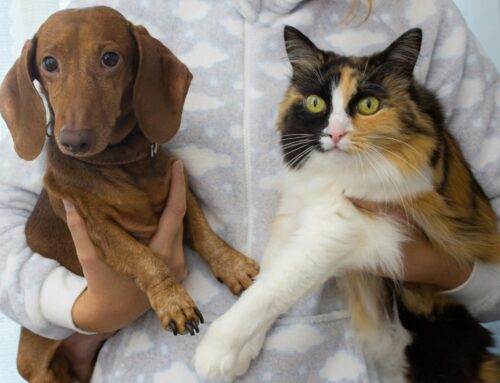Training your dog to come when called is one of the most important skills you can teach them. Whether it’s in your backyard, at the park, or during an emergency situation, a reliable recall can keep your dog safe and give you peace of mind. When you successfully train your dog to come by using positive reinforcement methods, you will automatically strengthen your bond and build trust between you and your pup.
Understanding the Basics
Before diving into training techniques, it’s essential to understand the basics of why dogs might not come when called. Dogs are naturally curious and easily distracted creatures, so it’s crucial to make yourself more enticing than whatever else has captured their attention. Additionally, some dogs may have had negative experiences or lack proper socialization, making them hesitant to respond to commands.
Building a Strong Foundation
The first step in training your dog to come when called is to establish a strong foundation of obedience commands. Start in a quiet, familiar environment with minimal distractions. Use treats or a favorite toy as a reward to reinforce positive behavior. Begin with basic commands like “sit” and “stay,” gradually increasing the distance between you and your dog.
Creating Positive Associations
When it comes to training your dog to come when called, positive reinforcement is key. Use treats, praise, and affection to reward your dog every time they respond to your command. Make the experience enjoyable for them, associating coming when called with good things like treats, playtime, and attention from you. This positive reinforcement will encourage your dog to repeat the behavior in the future.
Choosing the Right Treats
When training your dog to come when called, selecting the right treats can make a significant difference in their motivation and success. Here are some tips for choosing the best treats for recall training:
High-Value Treats
Opt for treats that your dog finds irresistible. These high-value treats can include small pieces of cooked chicken, cheese, freeze-dried liver, or commercially available dog treats with a strong aroma and flavor.
Size of Treats
Choose treats that are small and easy for your dog to consume quickly. This allows for rapid reinforcement during training sessions without causing interruptions or distractions.
Variety of Treats
Keep a variety of treats on hand to maintain your dog’s interest and excitement during training. Rotating between different types of treats can prevent boredom and ensure continued motivation.
Healthy Options
While it’s important to use treats that your dog enjoys, prioritize options that are also healthy and nutritious. Look for treats made with high-quality ingredients and free from artificial additives or fillers.
Special Occasion Treats
Reserve extra-special treats, such as freeze-dried liver or homemade treats, for particularly challenging training sessions or situations with high distractions. These special treats can serve as a powerful incentive for your dog to come when called in more difficult environments.
Regularly Reward
Whatever treats you choose, ensure consistency in rewarding your dog for responding to the recall command. Use treats as a positive reinforcement tool to reinforce desired behavior and strengthen the recall response.
Consistency is Key
Consistency is crucial when training your dog to come when called. Use the same command every time, whether it’s “come,” “here,” “front,” or another word of your choice.
Start Small and Gradually Increase Difficulty
Begin training sessions in a controlled environment with few distractions, gradually increasing the level of difficulty as your dog becomes more reliable. Practice in different locations, with varying levels of distractions, to reinforce the behavior in different contexts. Remember to always set your dog up for success by gradually increasing the difficulty of the training environment.
Use a Long Line for Safety
When practicing recall in an open or unfamiliar area, consider using a long line to ensure your dog’s safety. A long line gives you control over your dog’s movements while still allowing them the freedom to explore and play. Start with a lightweight, 30-foot leash and gradually increase the length as your dog becomes more reliable.
Avoid Punishment
It’s essential to avoid using punishment or negative reinforcement when training your dog to come when called. Punishing your dog for not responding to your command can create fear and anxiety, leading to a breakdown in trust between you and your companion. Instead, focus on positive reinforcement and patience to achieve the desired behavior.
Practice, Practice, Practice
Consistent practice is the key to success when it comes to training your dog to come when called. Set aside dedicated training sessions each day, keeping them short and engaging to maintain your dog’s focus and enthusiasm. Remember to be patient and understanding, as every dog learns at their own pace.
Different Training Methods for Recall
While positive reinforcement is a highly effective training method for teaching your dog to come when called, there are various approaches you can incorporate to enhance your training sessions and cater to your dog’s individual needs. Let’s explore some different training methods that you can experiment with to achieve success in recall training.
The Traditional Method
The traditional method of recall training involves using a long line and gradually increasing the distance between you and your dog. Start in a familiar environment with minimal distractions, such as your backyard. Attach a long line to your dog’s collar and let them explore while you hold the other end of the line. Call your dog’s name followed by the recall command, such as “Fido, come!” Use a cheerful and enthusiastic tone to encourage them to return to you. If your dog hesitates or ignores your command, gently reel them in using the long line while continuing to encourage them verbally. Once they reach you, reward them with praise and treats.
The Treat Lure Method
The treat lure method is particularly useful for puppies and dogs who are highly motivated by food. Start by showing your dog a treat and allowing them to sniff it. Hold the treat in your hand and slowly move it towards you while simultaneously giving the recall command, such as “Come.” As your dog moves towards you, continue to encourage them with verbal praise. Once they reach you, reward them with the treat and plenty of praise. Gradually phase out the use of treats as your dog becomes more reliable in their recall response.
The Clicker Training Method
Clicker training is a form of positive reinforcement that uses a clicker as a marker to signal desired behavior. Start by teaching your dog to associate the sound of the clicker with receiving a reward. Simply click the clicker and immediately give your dog a treat. Once your dog understands the association between the clicker and treats, you can begin recall training. Call your dog’s name followed by the recall command, such as “Rover, come!” As soon as your dog starts moving towards you, click the clicker and reward them with a treat upon arrival.
The Playtime Reward Method
Some dogs are highly motivated by play and interaction with their owners. Incorporating playtime as a reward for recall training can be highly effective for these dogs. Start by engaging in a game of fetch or tug-of-war with your dog. After a few rounds of play, pause and call your dog’s name followed by the recall command, such as “Buddy, come!” Use an excited and enthusiastic tone to encourage them to return to you. Once they reach you, resume play and reward them with additional playtime and praise.
The Boundary Training Method
Boundary training involves teaching your dog to recognize and respect boundaries, such as the perimeter of your yard or a specific area at the park. Start by walking your dog around the boundary while keeping them on a leash. When your dog approaches the boundary line, gently guide them back using the leash and give the recall command, such as “Come back!” Reward your dog with treats and praise when they return to you. With consistent practice, your dog will learn to stay within the boundaries and respond to your recall command effectively.
Choosing the Right Method
Every dog is unique, so it’s essential to experiment with different training methods to determine which one works best for your dog. Keep in mind your dog’s personality, motivations, and learning style when selecting a training approach. Combining multiple methods or tailoring your approach based on your dog’s preferences can also lead to greater success in recall training. Remember to be patient, consistent, and positive throughout the training process, and celebrate each small victory along the way.
Troubleshooting Common Issues
If your dog is struggling to come when called, consider the following troubleshooting tips:
Increase Rewards
Offer higher value rewards, such as special treats or extra playtime, to increase motivation.
Reduce Distractions
Start training in a quiet, familiar environment before gradually introducing distractions.
Refresh Basic Commands
Reinforce basic obedience commands like “sit” and “stay” to strengthen your dog’s overall responsiveness.
Seek Professional Help
If you’re having trouble making progress, consider seeking guidance from a professional dog trainer who specializes in recall training.
Conclusion
Training your dog to come when called is a vital skill that can enhance their safety and strengthen your bond. By exploring different training methods, such as the traditional method, treat lure method, clicker training method, playtime reward method, and boundary training method, you can find the approach that resonates best with your dog and achieves the desired results. Remember to be patient, stay consistent, and most importantly, have fun with the training process. With dedication and positive reinforcement, you can teach your dog to reliably respond to your recall command, ensuring their safety and your peace of mind in any situation.




